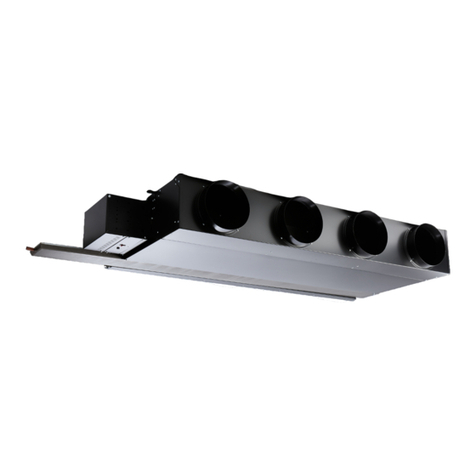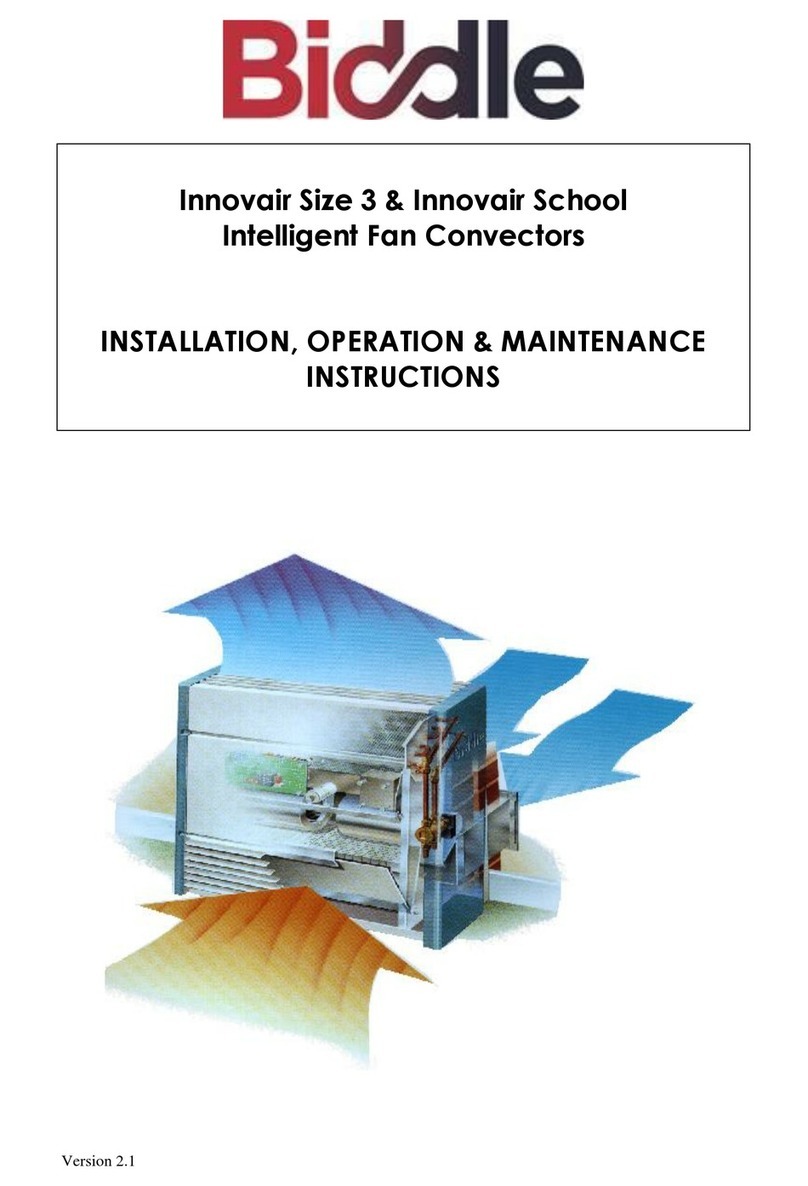
Modular fan coil unit Contents
Version 2.1English (17-07-2018)3
Contents
1Introduction ........................4
1.1 About this manual ............................. 4
1.2 How to use this manual .................... 4
1.2.1 Marginal symbols in the manual ......... 4
1.2.2 Pictograms used on the unit and in
the manual................................................... 4
1.2.3 Related documentation....................... 4
1.3 About the unit.................................... 5
1.3.1 Applications ........................................ 5
1.3.2 Working............................................... 5
1.3.3 Modules .............................................. 5
1.3.4 Type code ........................................... 6
1.3.5 Type plate ........................................... 6
1.4 Components ..................................... 6
1.4.1 Required components......................... 6
1.4.2 Accessories ........................................ 7
1.4.3 Parts not supplied............................... 7
1.5 Safety instructions ............................ 7
1.5.1 Operation............................................ 7
1.5.2 Installation, maintenance and
service ......................................................... 7
2Installation..........................8
2.1 Safety instructions ............................ 8
2.2 Delivery check .................................. 8
2.3 General instructions.......................... 8
2.3.1 Order of working ................................. 8
2.3.2 Miscellaneous..................................... 8
2.4 Installing the wall duct ...................... 8
2.5 Installing the roof duct ...................... 9
2.6 Suspending the unit........................ 10
2.6.1 Positioning ........................................ 10
2.6.2 Installing the suspension rail............. 10
2.6.3 Suspending and securing modules....11
2.7 Connecting the valve motor............ 12
2.8 Connecting ducts ............................ 12
2.9 Connecting the unit to the CH
and/or CW system ................................ 12
2.9.1 Water connections ............................ 12
2.9.2 Frost protection................................. 13
2.9.3 Connecting water pipes .................... 13
2.10 Connecting the condensate drain. 13
2.10.1 Particulars....................................... 13
2.10.2 Connecting the condensate drain... 13
2.11 Connecting the unit to mains
power supply......................................... 14
2.11.1 General ........................................... 14
2.11.2 Connecting to mains ....................... 14
2.12 Installing the controller.................. 14
2.13 Switching on and checking
operation............................................... 14
3Maintenance ....................16
3.1 Safety instructions .......................... 16
3.2 Replacing the filter .......................... 16
3.2.1 Introduction....................................... 16
3.2.2 Replacing flat-bed filter in base
module....................................................... 16
3.2.3 Replacing bag-type filter or pleated
filter............................................................ 16
3.3 Cleaning.......................................... 16
3.4 Scheduled maintenance ................. 16
4Service.............................18
4.1 Safety instructions .......................... 18
4.2 Opening the unit ............................. 18
4.2.1 Base module..................................... 18
4.2.2 Electronics compartment .................. 18
4.3 Fuses .............................................. 19
4.4 High-limit thermostat....................... 19






























